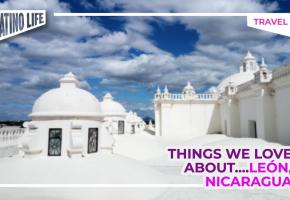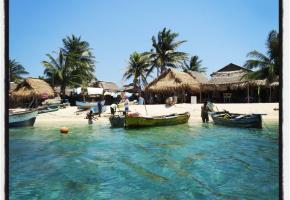Staying on the Pacific coast of Costa Rica I was only a couple of hours away from the border with Nicaragua so I happily hopped on a bus in the afternoon avoiding the early wake call which is usually a necessity in Central America when getting from a to b. I took a bus at 3pm and got to the border at 5pm where I was expecting a swift crossing into Nicaragua. This was not the case. Unlike other Central American countries the procedure to enter Nicaragua was bureaucratic and slow with rude staff. I was forced to show my passport 5 times at different points in the crossing and ended up having to fill out the same form 3 times. By the end of the protracted procedure I was quite sceptical about leaving Costa Rica with their friendly motto of “pura vida” and was hoping that my border crossing experience was not in any way a reflection of Nicaragua.
I soon learned it wasn’t. The city of Granada was not far from the border and when I arrived, I was greeted with such warmth and hospitality that I soon forget the border police. Granada is a city with bundles of charm. Everywhere you walk you are surrounded by fantastic colonial architecture that has been uniquely preserved since the arrival of the Spanish. When walking through the cobbled streets you take in the quirky persona of the city that has houses of every colour under the sun.

When I arrived the city was buzzing with excitement. I was talking with some locals and was told that the main night of the festival was on Saturday and arguably the best night of the year to be in the city. My expectations soared and I couldn’t wait to be a part of the magical carnival.
The atmosphere was fantastic, everyone was preparing for it and in the central square people were constructing stages for the musicians and dancers.
I decided to go out for a drink and our group couldn’t decide what was better, Victoria or Toña. They are the favourite brands of beer and the barman said which one you drink says a lot about you. I decided Victoria was my preferred and asked the barman what that signified and he said, “if you don’t know now, you’ll never know”. Whether it does mean anything is questionable because I asked some other people and they said there was no meaning behind the beer. True or not, our group was coming up with different theories about what the beers could signify all night.
The next morning we took a tour on a traditional horse and cart and my guide explained to me the rich history of the city and how the government had enforced certain laws that restricted the construction of new buildings in a modern style so that the city would not lose its quaintness.
The level of poverty is noticed straight away in Nicaragua. Having just come from Costa Rica where foreign investment is rife and tourism is in abundance, Nicaragua was another world entirely. There were hardly any tourists; much less influence from the US and scarcely anyone spoke English.
Having known nothing about Nicaragua before coming, I decided to investigate why there was such a big disparity between it and it’s southern neighbour. I went to a museum about the history of the country and suddenly everything made sense- it was still suffering from the effects of a savage war. Later on when talking to someone about the topic they told me that
“Our country still has a hangover from the war and because of this, we’re years behind our neighbours both economically and politically.”
However, what Nicaragua does have is a big heart. Everywhere I went I was greeted with a smile and people would jump at the opportunity to educate me about their country and give me tips on good places to go and things to see.
At 4pm the festivities began. They didn’t disappoint.
People were walking around on stilts with headdresses that looked reminiscent of Venetian masks but with a central American touch. The music was great and it was very much a family event, people were dancing everywhere you looked and just like every other Central American country, everyone can dance. People were moving their hips with such grace and coming from England where the average bloke doesn’t dance I stood out like a sore thumb. People were desperately trying to improve my salsa skills and I am sure they were good teachers but they didn’t manage to get my hips going. I heard the phase “mueve tus caderas” (move your hips) quite a few times but after it was clear they weren’t going to move they just accepted my variant of salsa and we had a laugh about it.
The richness in colour was beautiful. Just how the houses were all different colours, the members of the parade were all dressed in amazing colours with face paint and glitter, jiving to the sounds of the drums. I was stood in the same spot for about an hour just mindlessly gazing at the movement of the dancers. After the main parade as over, small ones proceeded to come and there were fire dancers and rogue musicians plying their trade in the centre of the square.
Around midnight everyone started moving to “el club” which apparently was the place to be so we headed there to check it out. It was relatively big with a low ceiling and people were going mental. Shots of tequila were being consumed left right and centre and the club was so packed you could hardly move an inch without stepping on someone’s foot. Because of the fact the festival had started at 4 I was knackered and even though no one else seemed like slowing down my stamina was faltering. At around 4 in the morning my legs felt like lead after dancing for so long so I decided to call it a night and head home. Even on the walk home people were dancing on the streets and beckoning me to join in with their celebrations. In a post carnival haze it took me a while to direct myself to the hotel but in the end I made it back to my room and fell asleep with the sounds of the drums still ringing in my ears.



















